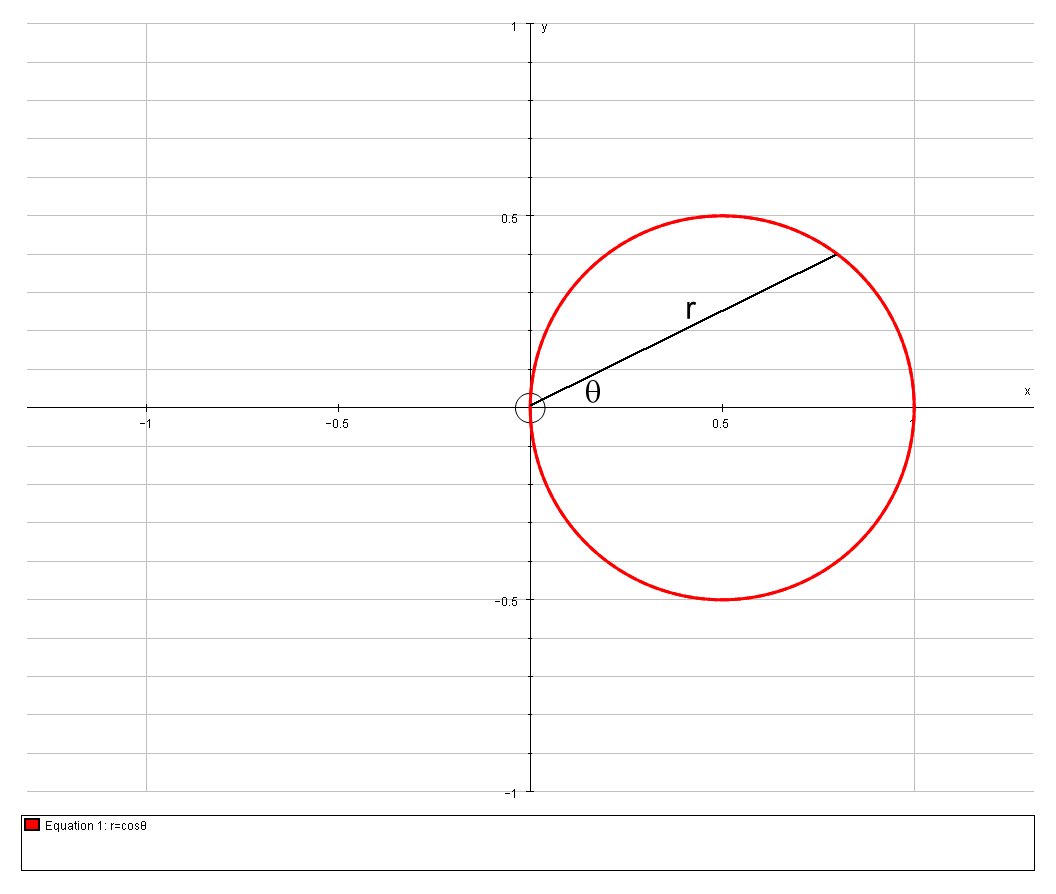Calculate the area bounded by the polar curve #r=cos theta#?
1 Answer
# pi/4 #
Explanation:
The area we seek is.
If we convert to Polar Coordinates then the region
an angle from
#theta=-pi/2# to#theta=pi/2#
a ray from#r=0# to#r=cos theta#
And as we convert to Polar coordinates we get:
# x \ \ \ = rcos theta#
# y \ \ \ = rsin theta#
# dA = dy dy = r dr d theta#
So then the bounded area is given by#
# A = int int_R \ dA #
# \ \ = int_(-pi/2)^(pi/2) \ int_0^(cos theta) \ r dr d theta #
# \ \ = int_(-pi/2)^(pi/2) \ [1/2r^2]_0^(cos theta) \ d theta #
# \ \ = int_(-pi/2)^(pi/2) \ 1/2cos^2theta \ d theta #
# \ \ = int_(-pi/2)^(pi/2) \ 1/2 (1+cos2theta)/2 \ d theta #
# \ \ = 1/4 \ int_(-pi/2)^(pi/2) \ 1+cos2theta \ d theta #
# \ \ = 1/4 \ [theta + (sin2theta)/2]_(-pi/2)^(pi/2) #
# \ \ = 1/4 \ { (pi/2-1) - (-pi/2-(-1)) } #
# \ \ = 1/4 \ ( pi/2-1+pi/2+1) #
# \ \ = 1/4(pi) #
Observations:
Note that
# A = pi(1/2)^2 = pi/4#
Also, note that if we apply the double integration progress to a generic function
# A =int_alpha^beta \ 1/2r^2 \ theta # .


